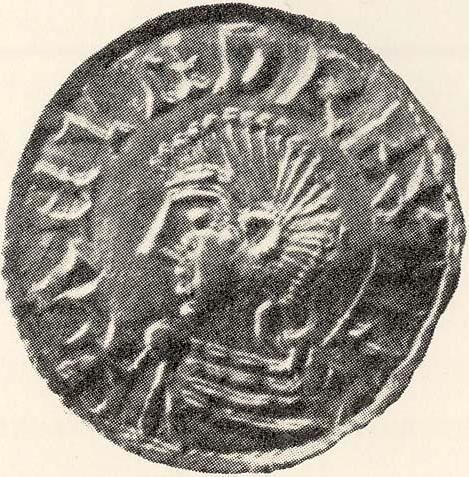Reign 1022–1050 AD Died 1050 Predecessor Olof Skotkonung Father Olof Skotkonung Spouse Gunnhildr (m. ?–1050) | Name Anund Jacob House House of Munso Consort Gunnhildr Sveinsdottir Role King Children Gyda of Sweden | |
 | ||
Parents Estrid of the Obotrites, Olof Skotkonung Similar People Olof Skotkonung, Eric the Victorious, Sweyn II of Denmark, Sigrid the Haughty, Ingegerd Olofsdotter of Sweden | ||
Anund Jacob or James, Swedish: Anund Jakob was King of Sweden from 1022 until around 1050. He is believed to have been born on July 25, in either 1008 or 1010 as Jakob. When the Swedish Thing was to elect him the co-ruler of Sweden, the people objected to his non-Scandinavian name. They then gave him the pronomen Anund. The line of kings appended to the Westrogothic law says that he was called Kolbränna ("Coal-burner") as he had the habit of burning down the houses of his opponents.
His political agenda included maintaining the balance of power in Scandinavia, which is why he supported the Norwegian kings Olaf II and Magnus I against Denmark's king Cnut the Great during the 1020s and 1030s. At the Battle of the Helgeå, Anund and Olaf were either victorious over or defeated by Cnut.
When Magnus I became king of Norway and Denmark in 1042, Anund Jakob supported him until the death of Magnus in 1047. Anund Jakob's reign has traditionally been dated from 1022 to approximately 1050, but there is a great uncertainty over the year he died. He was probably alive 1049, and his brother and successor Emund is certain to have ruled Sweden in the summer of 1060.
Two skalds are known to have served Anund Jacob: Sighvatr Þórðarson and Óttarr svarti.
The Hervarar saga has very little to tell about Anund:
The Russian Nestor Chronicle relates that the "varyag prince" Jakun, dressed in a golden cloak, led an eastbound Swedish expedition to the other side of the Baltic Sea in 1024. He provided military reinforcements to Yaroslav I the Wise in a battle against Mstislav of Chernigov. The battle was fought during a thunderstorm and ended in a defeat for the allies, and Jakun went back over the sea. According to Gudmund Jöran Adlerbeth of the Swedish Academy (1802), Jakun was identical with King Anund Jakob. However, it is more likely that the name Jakun corresponds to Håkan and was another Swedish chief or petty ruler.
